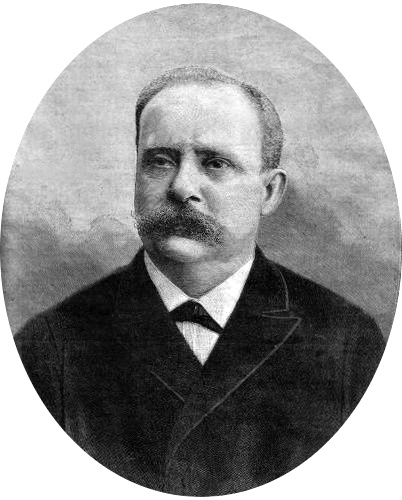Eugène Turpin on:
[Wikipedia]
[Google]
[Amazon]
 François Eugène Turpin (30 September 1848 – 24 January 1927) was a French
François Eugène Turpin (30 September 1848 – 24 January 1927) was a French
Jules Verne FAQ (English)
at jv.gilead.org.il
 François Eugène Turpin (30 September 1848 – 24 January 1927) was a French
François Eugène Turpin (30 September 1848 – 24 January 1927) was a French chemist
A chemist (from Greek ''chēm(ía)'' alchemy; replacing ''chymist'' from Medieval Latin ''alchemist'') is a scientist trained in the study of chemistry. Chemists study the composition of matter and its properties. Chemists carefully describe th ...
involved in research of explosive material
An explosive (or explosive material) is a reactive substance that contains a great amount of potential energy that can produce an explosion if released suddenly, usually accompanied by the production of light, heat, sound, and pressure. An exp ...
s. He lived in Colombes
Colombes () is a commune in the northwestern suburbs of Paris, France. It is located from the centre of Paris. In 2019, Colombes was the 53rd largest city in France.
Name
The name Colombes comes from Latin ''columna'' (Old French ''colombe'') ...
.
Biography
In 1881 Turpin proposedpanclastite Panclastites are a class of Sprengel explosives similar to oxyliquits. They were first suggested in 1881 by Eugène Turpin, a French chemist. They are a mixture of liquid dinitrogen tetroxide serving as oxidizer with a suitable fuel, e.g. carbon di ...
s, a class of Sprengel explosive Sprengel explosives are a generic class of materials invented by Hermann Sprengel in the 1870s. They consist of stoichiometric mixtures of strong oxidisers and reactive fuels, mixed just prior to use in order to enhance safety. Either the oxidiser ...
s based on a mixture of a suitable fuel with dinitrogen tetroxide
Dinitrogen tetroxide, commonly referred to as nitrogen tetroxide (NTO), and occasionally (usually among ex-USSR/Russia rocket engineers) as amyl, is the chemical compound N2O4. It is a useful reagent in chemical synthesis. It forms an equilibrium ...
as an oxidizer
An oxidizing agent (also known as an oxidant, oxidizer, electron recipient, or electron acceptor) is a substance in a redox chemical reaction that gains or " accepts"/"receives" an electron from a (called the , , or ). In other words, an oxid ...
.
In 1885, based on research of Hermann Sprengel
Hermann Sprengel FRS (29 August 1834 – 14 January 1906) was a German-British chemist who discovered the explosive nature of picric acid in 1873, patented safety explosives and invented the mercurial air pump.
Life
He was born at Schill ...
, Turpin patented the use of pressed and cast picric acid
Picric acid is an organic compound with the formula (O2N)3C6H2OH. Its IUPAC name is 2,4,6-trinitrophenol (TNP). The name "picric" comes from el, πικρός (''pikros''), meaning "bitter", due to its bitter taste. It is one of the most acidic ...
in blasting charges and artillery shell
A shell, in a military context, is a projectile whose payload contains an explosive, incendiary, or other chemical filling. Originally it was called a bombshell, but "shell" has come to be unambiguous in a military context. Modern usage ...
s. In 1887 the French government adopted it under the name Melinite, with addition of gun cotton
Nitrocellulose (also known as cellulose nitrate, flash paper, flash cotton, guncotton, pyroxylin and flash string, depending on form) is a highly flammable compound formed by nitrating cellulose through exposure to a mixture of nitric acid and ...
. Since 1888, Britain started manufacturing a very similar mixture in Lydd
Lydd is a town and electoral ward in Kent, England, lying on Romney Marsh. It is one of the larger settlements on the marsh, and the most southerly town in Kent. Lydd reached the height of its prosperity during the 13th century, when it was a co ...
, Kent, under the name Lyddite. Japan followed with an improved formula known as Schimose.
In 1897, Turpin sued Jules Verne
Jules Gabriel Verne (;''Longman Pronunciation Dictionary''. ; 8 February 1828 – 24 March 1905) was a French novelist, poet, and playwright. His collaboration with the publisher Pierre-Jules Hetzel led to the creation of the ''Voyages extraor ...
for basing Thomas Roch from the ''Facing the Flag
''Facing the Flag'' or ''For the Flag'' (french: Face au drapeau) is an 1896 patriotic novel by Jules Verne. The book is part of the ''Voyages extraordinaires'' series.
Like ''The Begum's Millions'', which Verne published in 1879, it has the th ...
'' novel on him and the Melinite explosive. Verne, defended by Raymond Poincaré
Raymond Nicolas Landry Poincaré (, ; 20 August 1860 – 15 October 1934) was a French statesman who served as President of France from 1913 to 1920, and three times as Prime Minister of France.
Trained in law, Poincaré was elected deputy in 1 ...
, was found innocent; his letter to his brother Paul however confirms the character was indeed based on Turpin.at jv.gilead.org.il
Notes
{{DEFAULTSORT:Turpin, Francois Eugene 1848 births 1927 deaths 19th-century French chemists Scientists from Paris 20th-century French chemists